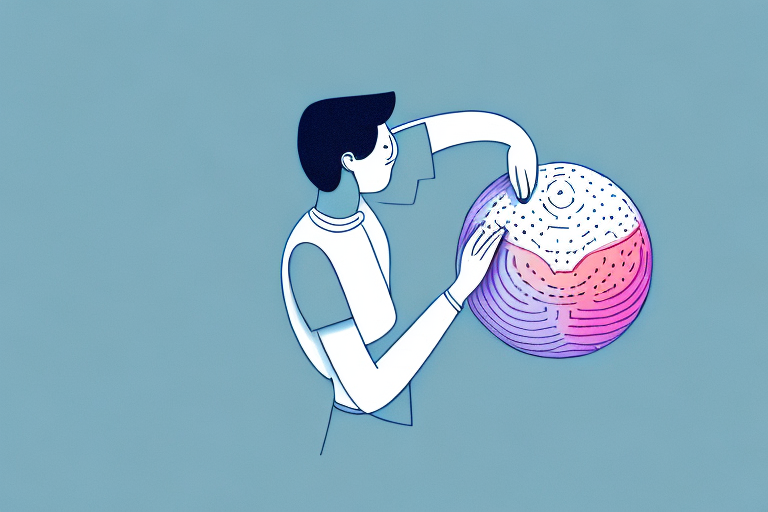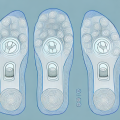If you suffer from sciatica pain, you know just how debilitating it can be. The level of pain can vary from a mild ache to a sharp, shooting pain in your lower back, hip, and down your leg. While there are several different treatment options available, using a trigger point ball has become increasingly popular as an effective way to relieve sciatica pain. In this article, we will discuss the root causes of sciatica pain, the benefits of trigger point ball therapy and provide a step-by-step guide on how to use a trigger point ball for sciatica pain relief.
Understanding Sciatica and its Symptoms
Sciatica is a condition that affects many people of all age groups, but is more commonly found in older adults. It is caused by the compression of the sciatic nerve, which is the longest nerve in the body that runs from the lower back, down through the buttocks, and into each leg. The most common symptoms of sciatica pain include lower back pain, numbness, tingling, and a sharp or shooting pain in the legs. The pain can be exacerbated by sitting or standing for prolonged periods of time or bending forward at the waist.
Other symptoms of sciatica may include weakness in the affected leg, difficulty in moving the leg or foot, and a burning sensation in the affected area. In some cases, individuals may also experience bladder or bowel dysfunction, which requires immediate medical attention. It is important to seek medical advice if you experience any of these symptoms, as untreated sciatica can lead to permanent nerve damage. Treatment options for sciatica include physical therapy, medication, and in severe cases, surgery.
Causes of Sciatica Pain and How a Trigger Point Ball Can Help
Sciatica pain can be caused by a variety of factors, including a herniated disk, spinal stenosis, or degenerative disk disease, among others. In some cases, sciatica pain can be caused by trigger points, which are tender nodules that form in the muscles closest to the sciatic nerve. These trigger points can put pressure on the sciatic nerve, resulting in intense pain. Trigger point ball therapy can help to alleviate this pressure by targeting these trigger points and breaking them down.
In addition to trigger points, other factors that can contribute to sciatica pain include poor posture, obesity, and lack of exercise. Poor posture can put pressure on the sciatic nerve, while excess weight can cause inflammation and compression of the nerve. Lack of exercise can also contribute to sciatica pain by weakening the muscles that support the spine. Incorporating regular exercise, maintaining good posture, and using a trigger point ball can all help to alleviate sciatica pain and improve overall spinal health.
Benefits of Using a Trigger Point Ball for Sciatica Pain Relief
Trigger point ball therapy is a non-invasive, drug-free method of relieving sciatica pain. It has minimal side effects and can be done in the comfort of your own home. In addition to breaking down trigger points and alleviating pressure on the sciatic nerve, trigger point ball therapy can also improve flexibility and mobility, reduce muscle tension, and increase blood flow to the affected area. Additionally, it is an affordable and easily accessible treatment option that can be tailored to your unique needs.
It is important to note that while trigger point ball therapy can be effective in relieving sciatica pain, it is not a substitute for medical treatment. If you are experiencing severe or persistent pain, it is important to consult with a healthcare professional to determine the underlying cause and appropriate treatment plan. Additionally, it is important to use the trigger point ball properly and to avoid applying too much pressure, as this can cause further injury or discomfort.
How to Choose the Right Trigger Point Ball for Your Needs
Choosing the right trigger point ball for your needs is crucial to achieving maximum relief from sciatica pain. Trigger point balls come in various sizes, densities, and materials. If you are a beginner or have a low pain tolerance, it is advisable to start with a larger ball or a softer material. As you progress, you can choose smaller and firmer balls to target deeper muscles and more stubborn trigger points. It is recommended to consult with a healthcare professional or a fitness trainer to determine which type of ball would be best for you.
Another important factor to consider when choosing a trigger point ball is the specific area of your body that you want to target. For example, if you are experiencing pain in your feet, a smaller ball may be more effective in reaching the trigger points in that area. On the other hand, if you are targeting larger muscle groups like your back or glutes, a larger ball may be more suitable. It is also important to note that some trigger point balls come with additional features such as spikes or ridges, which can provide a deeper massage and more intense pressure. Ultimately, the right trigger point ball for you will depend on your individual needs and preferences.
Step-by-Step Guide to Using a Trigger Point Ball for Sciatica Pain Relief
Before starting trigger point ball therapy, warm up your muscles by taking a hot bath, using a heating pad, or doing gentle stretches. Position the trigger point ball directly on the trigger point, either by laying on the floor or against a wall. Apply pressure to the ball and start moving it in a circular or up-and-down motion. Adjust the pressure and speed according to your preference and pain tolerance. Hold the pressure for 30-60 seconds and then switch to a different trigger point. Repeat this process for 10-15 minutes, focusing on the areas that feel the most tender or tense.
Best Practices for Incorporating Trigger Point Ball Therapy into Your Daily Routine
Trigger point ball therapy is most effective when done regularly, ideally on a daily basis. It is recommended to incorporate it into your pre- or post-workout routine, or during times of the day when you are most prone to sciatica pain. Make sure to drink plenty of water and do not apply too much pressure or work on the affected area for too long to avoid aggravating the pain.
Other Home Remedies and Exercises for Managing Sciatica Pain
In addition to trigger point ball therapy, there are several other home remedies and exercises that can help manage sciatica pain. These include yoga, Pilates, stretching, and strengthening exercises, such as squats or lunges. Applying heat or ice to the affected area, getting regular massages, and maintaining proper posture can also alleviate sciatica pain.
When to Seek Professional Help and Alternative Treatment Options
If your sciatica pain persists or worsens despite regular trigger point ball therapy and other home remedies, it is advisable to seek professional help. A healthcare professional can provide a more thorough diagnosis and recommend alternative treatment options, such as chiropractic care, physical therapy, or medication. In severe cases, surgery may be necessary to alleviate the pressure on the sciatic nerve.
Tips for Preventing Future Sciatica Pain Episodes
Preventing future sciatica pain episodes is crucial for maintaining a healthy and pain-free lifestyle. Some tips to prevent sciatica pain include maintaining good posture while sitting and standing, avoiding prolonged periods of sitting or standing, maintaining a healthy weight, and doing regular exercises that target the muscles in your back, glutes, and legs.
In conclusion, trigger point ball therapy is a safe, effective, and affordable way to relieve sciatica pain. While it is important to consult with a healthcare professional before starting trigger point ball therapy, it can be a valuable addition to your pain management routine. By using a trigger point ball regularly, incorporating other home remedies and exercises, and maintaining good posture and a healthy lifestyle, you can successfully manage your sciatica pain and prevent future episodes.





